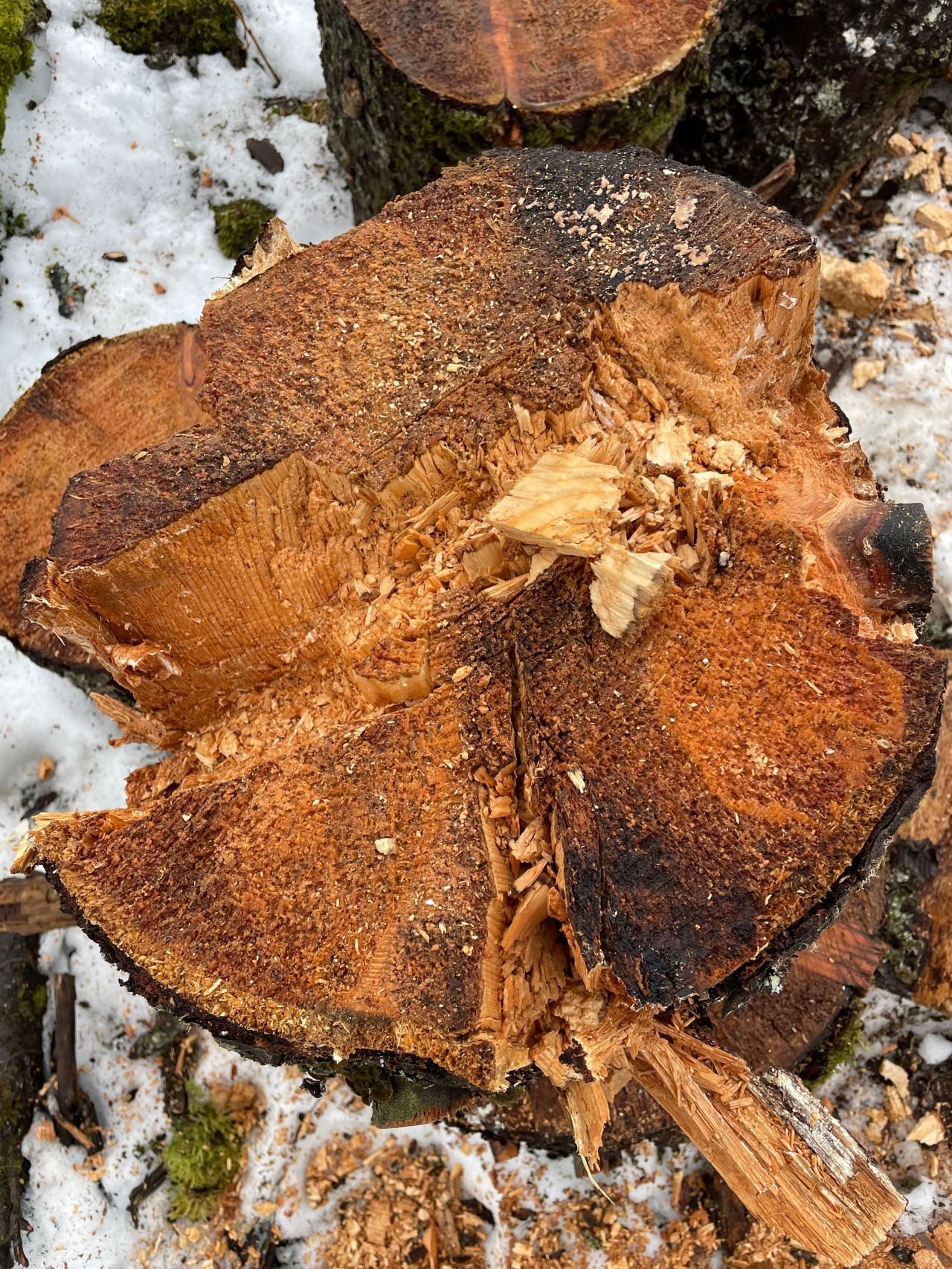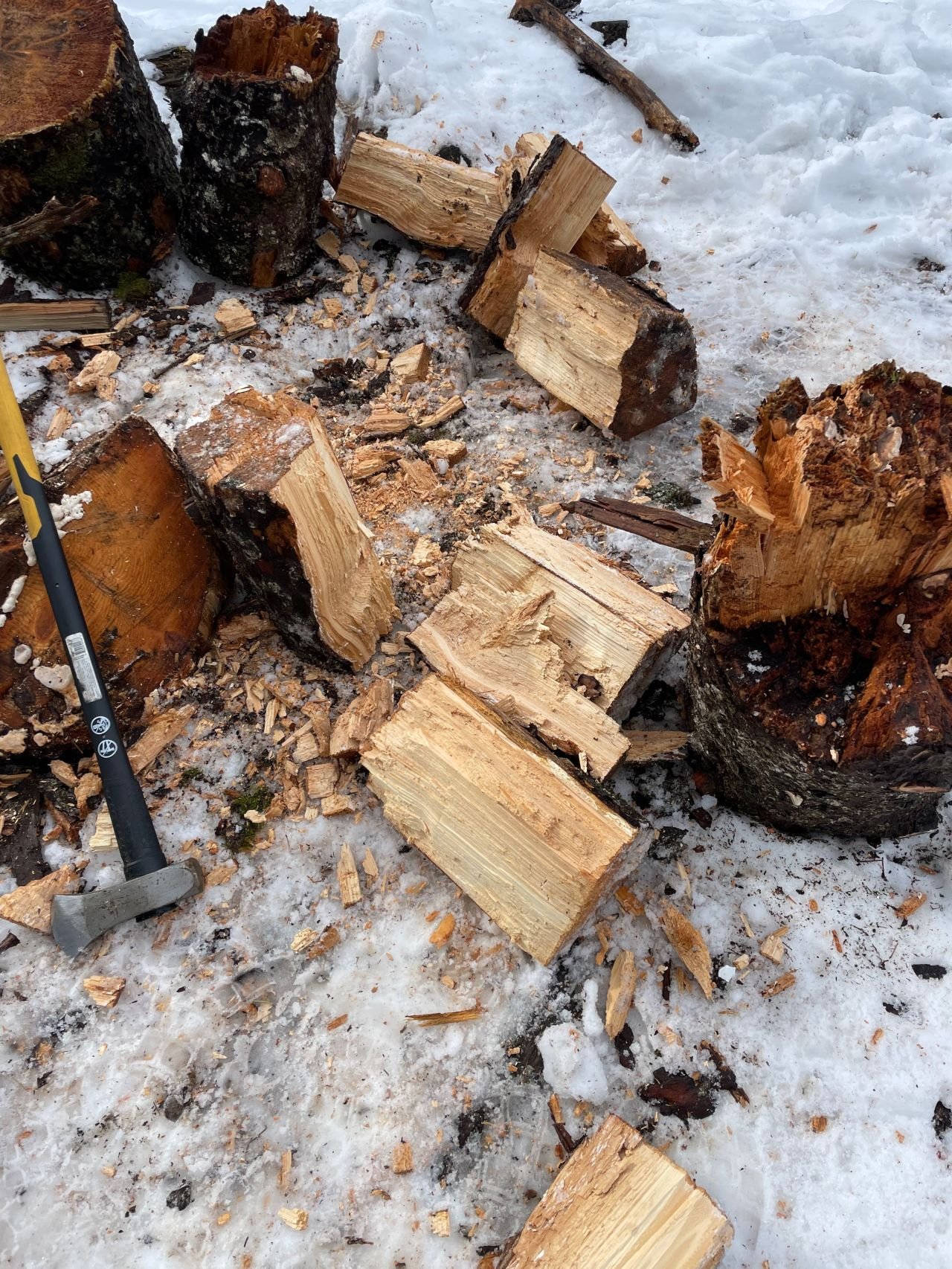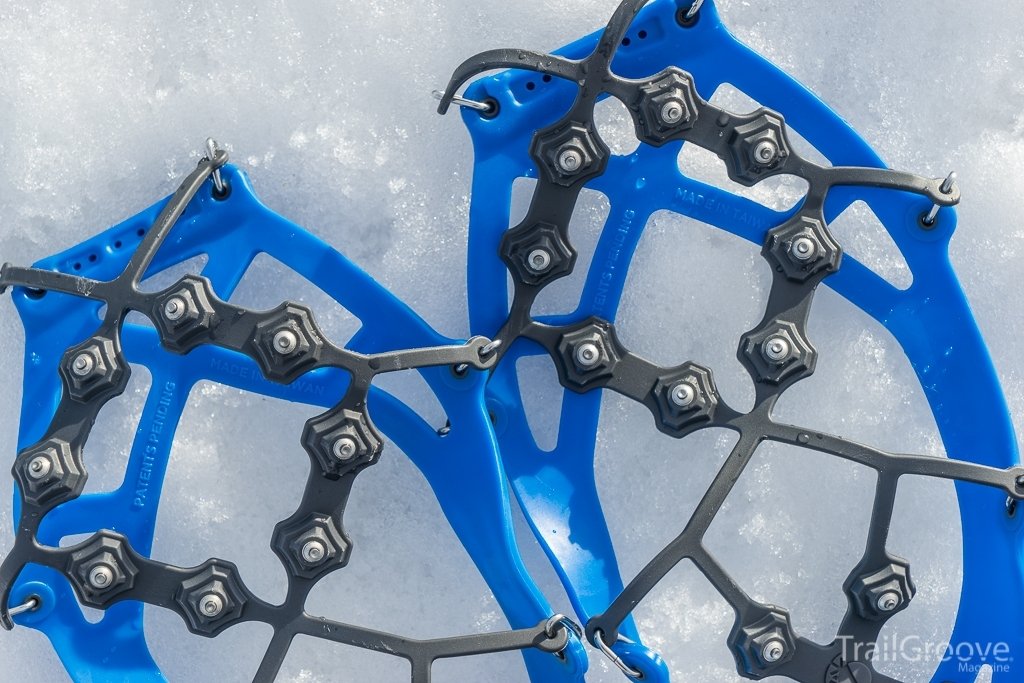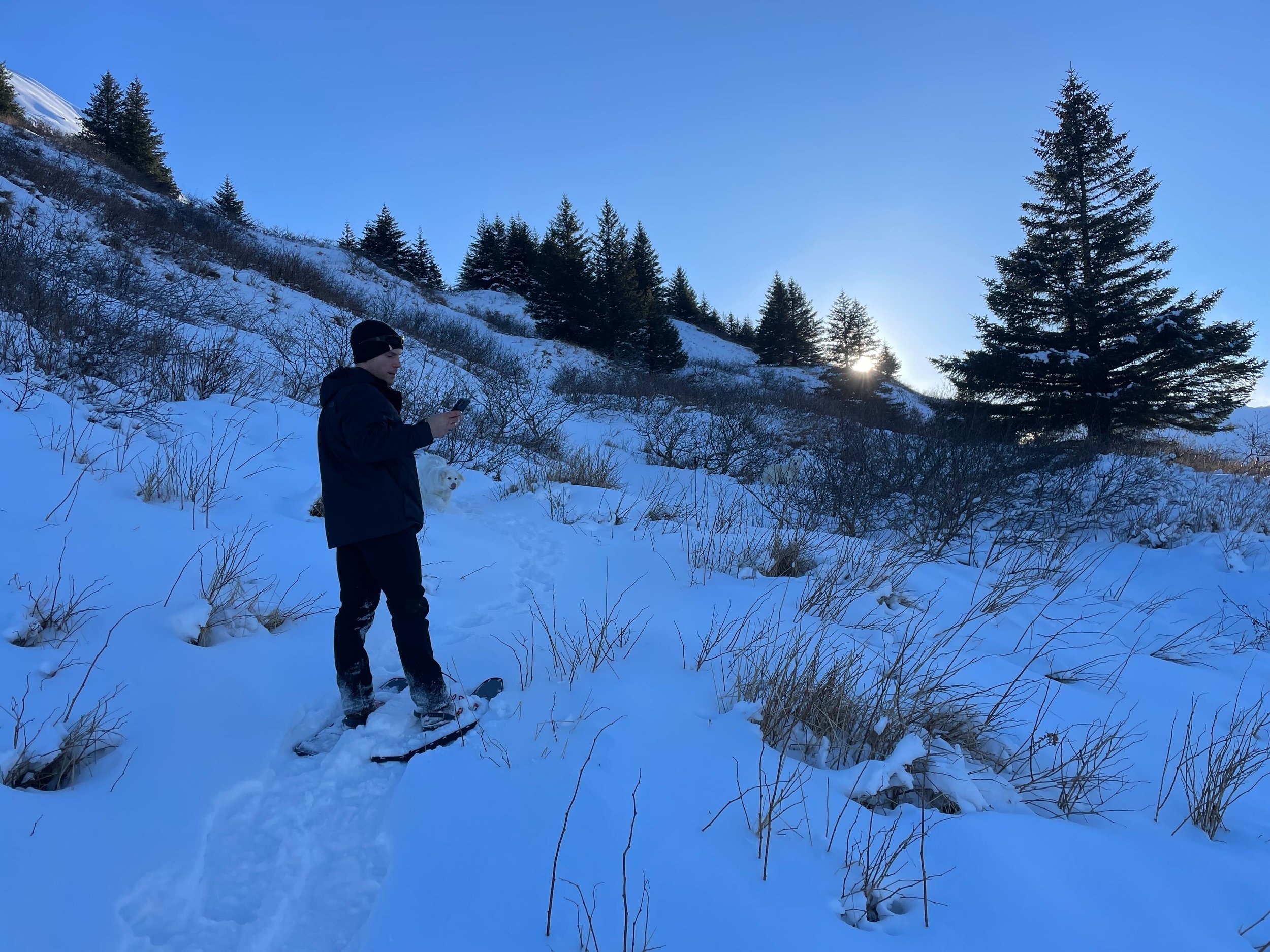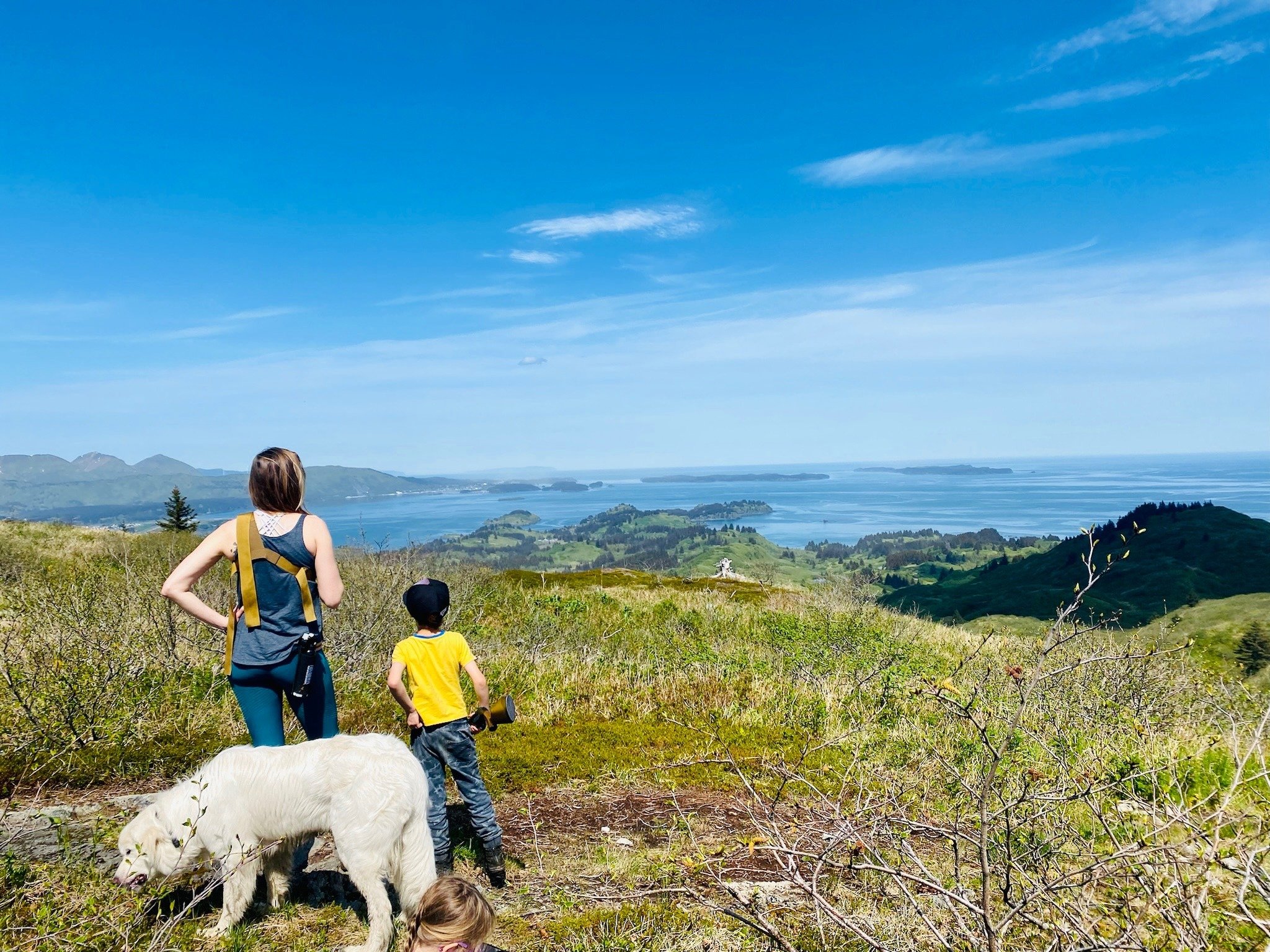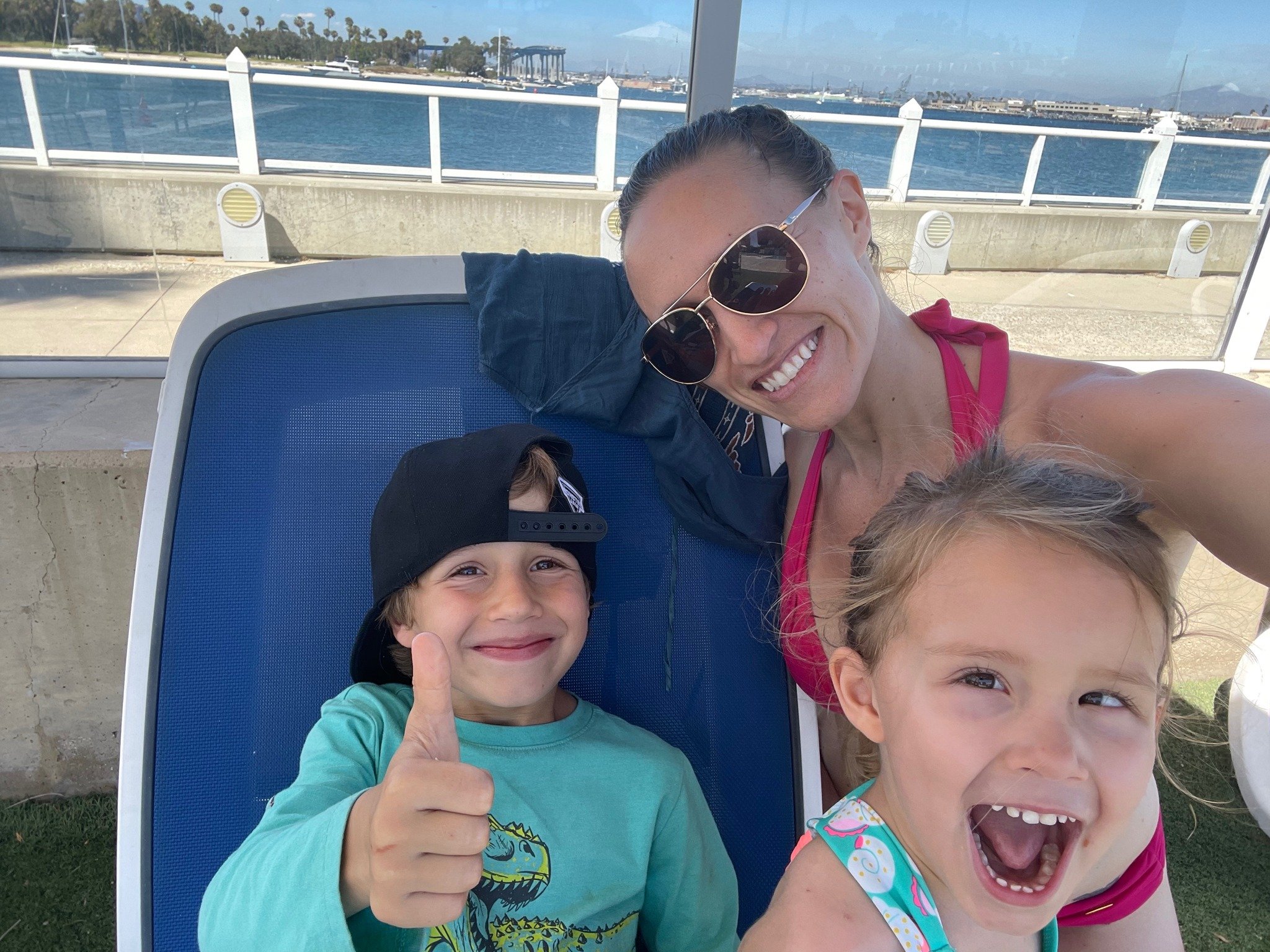9 Life/Career/Work Lessons Learned from the Wilds of Kodiak, AK
It has been almost a year since our family moved from San Diego to Kodiak, AK. It seems like the perfect time to reflect back on all cool things I’ve learned from such a massive change of pace.
Lesson #1: Wood Chopping Teaches Persistence
Who says you can’t teach an old dog new tricks? Learning to chop wood for the first time in your late 30s is proof that all it takes to learn new skills is persistence combined with a willingness to look stupid until you figure it out 😅.
The images show more than most words can.
Day 1 of learning how to split logs (e.g. total fail).
Day 3 of honing the skill (e.g. passable ability to keep my house warm!)
What you don’t see in between those two pictures is lots of YouTube videos (there is a surprising amount of strategy involved in splitting logs…), a couple lessons from my amused husband, and lots of weird looks while people drove by wondering why there was an unskilled spastic person cutting wood in my front yard.
I’m now happy to report that I can fully heat my house unsupported (and significantly cheaper than with fuel) and get a killer extra core workout once per day 🪓🪓.
…And my skills have improved enough to significantly reduce the weird looks from passersby.
The Lesson: You’re going to suck at absolutely everything at first. The difference between success and failure is a willingness to suck for a while until you finally stop sucking.
Lesson #2: Cold-Ass Water Teaches You to Stop Comfort-Seeking
The hardest part of anything is the first step.
The chasm between deciding to do something and actually doing the thing.
When I was a kid, I was always the weirdo who'd jump into freezing lake water. As an adult, I'm that weirdo who's into Wim Hoff and taking cold showers.
Since moving to Kodiak, AK, I've become that extreme weirdo who gets into the ocean when it is snowing while passersby gape at me from their cars.
Despite the fact that I've been doing this for years, I still find that the hardest part of the whole experience (as extreme as it has become for me), is the moment I have to get out of my car and walk to the water.
Not the part where I get in the water. Not the part where I'm in the water. Not the part where I get out of the water and the air is somehow colder than the water.
It is the simple act of stepping out of my comfortable car and taking the first step toward the water.
Once you've started something, you have momentum. Once you've taken the first step, every step after becomes easier.
The Lesson: Whatever your 36 degree ocean water is, getting out of your comfortable car and taking the first step is the hardest part. Every step after gets easier. Comfort-seeking is our natural inclination. Breaking that habit is the best way to go where you want to go.
Lesson #3: Salmon Fishing Teaches You to Keep Your Eyes on the Prize without Losing Your Peripheral Vision
In Kodiak, if you want to go fishing (and you definitely want to go fishing because fresh salmon here is unbeatable), you have to be prepared to come face-to-face with a top competitor.
Kodiak bears (the largest species of brown bear, and native to Kodiak) are similarly interested in the same fish you are, and they are a decidedly formidable opponent.
Many people let that scare them off of fishing. If you’re willing to brave it, you quickly realize that there are plenty of salmon to go around. And, frankly, unless you bug them, the bears don’t actually want much more to do with you than you do with them.
And, if you’ve been a time or two, you find it commonplace to hang out with the bears while you fish, each species of fisherman keeping a watchful eye on the other but finding a way to coexist with neither running low on available fish to catch.
But, don’t think you can go fishing without a good can of bear spray and some serious situational awareness.
This wonderful coexistence reminds me of one of my favorite sayings that I have ever come across in my years in the business world: “Be customer obsessed, and competitor aware.”
Too often, executives become focused solely on their competitors, and what their competitors are doing.
The following types of thoughts are all-too-common:
“Our competitors are offering this feature, we should too or we’ll lose customers.”
“Our competitors are doing this thing, they must know something we don’t.”
At the end of the day, the human fisherman chooses his bait based on what the salmon like (pink lures if you’re talking Kodiak salmon) and uses a rod and reel, despite the fact that her opponent (the bear) uses big paws and claws.
The Lesson: The same mindset should be true of how you approach business. Focus fiercely on delivering what you know your customers want and need. Know what your competitors are doing, but don’t let it dictate your strategy.
Lesson #4: Weather Teaches You How to Do Hard Things
You learn very quickly when you move to a much harsher environment, that you’re capable of a lot more than you might have thought.
Heck, when I lived in San Diego my son’s elementary school would cancel recess if it rained. In Kodiak, not only do the kids go outside to play in rain, snow, sun, or whatever weather comes their way, there is an actual 100% outdoor kindergarten program.
If that isn’t proof that cold absolutely doesn’t have to be a deterrent to life, I don’t know what is.
Kodiak is enough to teach anyone that doing hard things is pretty easy, if you just get over preconceived notions and have the right equipment.
The weather here teaches preparation as good as the boy scouts will. Having the right tools for your environment is all it takes. When I moved here, my shoewear went from flip-flops and tennis shoes to:
Exospikes: Small Studs meant for running on ice. They don’t dig all the way in like the rest of the spikes on this list so you won’t tear apart your ACL, but you’ve got just enough traction to avoid slipping.
Microspikes: Longer and more intense spikes meant for hiking to help give you enough traction as you walk up hills. Great for icy walks into town and hiking in a few inches of snow.
Crampons: The most intense of the “spikes” are crampons, used when essentially mountain climbing over icy surfaces. These come into play when you are hiking over rocky terrain that is steep and has been iced over.
Snowshoes: These stylish bad boys are for once you’ve passed the few inches of snow mark and trying to walk in snow results in you just digging yourself down up to the knee. Snowshoes help you walk on top of the snow like you’re walking on a cloud.
The Lesson: At the end of the day, you learn quickly that you just need to be prepared with the right strategy and tools to operate in hard conditions, and then you get rewarded with views nobody else gets to see.
Lesson #5: The Sunlight Schedule Teaches You that No Intensity is Meant to Be Maintained Indefinitely
In the winters, we get about 4 hours of full sunlight, with the rest of the time being dark on the shortest day of the year. In summers, it is reversed with only about 4 hours of darkness.
Before I moved to Alaska, a wonderfully wise person (Melissa Moody) told me that people in Alaska operate on more of a yearly rhythm than the daily rhythm I was used to. Now that I’ve been here for my first full year, I can fully say that I get it.
In summers, you are going at full bore. When it is light all night, you can do cool things like 10pm night hikes. You are outside enjoying the sun and the wilderness at absolutely every opportunity. You are going at maximum intensity for 14-16 hours of the day.
In winters, (if you’re like me) you are still doing plenty of fun outdoor things in the middle of the day, but you also spend a good chunk of the day snuggled up by a warm fire with a hot drink and a great book. You are getting intense moments balanced with lots of comfort and rest. And it is magical.
Athletes have operated in seasons for years. Mixing periods of high intensity with periods of rest. Kodiak forces it. And it helps you really see how much your body and your mind crave the seasonality.
No intensity, be it high or low, is meant to be a set point. It is meant to flow from one peak to one valley and back again.
I was certainly worried before moving about the many hours of darkness, but I found that I don’t mind them at all. In fact, I actually like them because scarcity makes you appreciate good things all the more.
Less hours of light means that sunsets take on a beauty and intensity they never had before.
The Lesson: Stop looking for a perfect intensity for life. You won’t find one. Instead flow gracefully between periods of low and high intensity, enjoying the beautiful parts of each one.
Lesson #6: Lack of Garage Teaches Simplicity Over Fluff
I’ve always maintained a home gym. As a working mom of 2 young kids, you are never guaranteed the ability to go to the gym. To get around it, I make sure that I have access to what I need at home so I can work out even in a pinch.
When we moved to Kodiak, we moved to a house without a garage. So our pretty great San Diego Garage Gym had to morph into something else.
The process reminded me that perfect is the enemy of good. But the importance of having the foundational basics can't be understated.
The trick is in being able to determine what is a "foundational basic" for success vs. what is just "fluff."
When I’m thinking of a gym:
Foundational basics: Barbell, squat rack, pull-up bar, dumbbells, and a roof (because of snow)
Fluff: Walls, heating system
Most people would completely disagree with me. In fact, most would think the opposite.
But at the end of the day, the result I'm trying to get (a good workout), determines what is fluff and what isn't.
I can get just as good of a workout by bundling up in warm clothes and working out outside as I can in a heated room. In fact, it is probably a better workout when you consider the benefits of fresh air and outside time.
I can't remotely get as good of a workout without a good set of weights. (I'm looking at you, crappy hotel gyms).
So our cool garage gym became an even cooler forest gym, a place where I’ve found that I get some of the best workouts I ever have, just with more clothing layers required.
The Lesson: Make sure you're accurately judging the foundational basics vs. the fluff against the results you want to obtain. Then make sure you have the foundational basics in place. Then start. Don't wait for things to be perfect. You can add fluff as you go. And really, really don't mistake fluff for a foundational basic. Or you'll never start.
Lesson #7: Building Fires Teaches You Not to Skip Steps
You know what’s fun? Building a fire with wet or frozen wood.
This is a daily practice after you move to Kodiak.
Over time you learn the perfect series of steps to make getting a fire started first thing on a frigid morning easier. And it requires A LOT of preparation.
Gather the wood
Saw it into logs
Find a place to let it dry it out if you can
Split the wood into small enough chunks to catch easily
Bring enough wood into the house a few hours before you want to use it (so it can heat up to room temperature)
Make sure you have kindling
Start with a log cabin style fire and turn it into a teepee style fire as it starts to catch
8. Feed the fire with enough oxygen as it takes off
9. Shut down the fire place to maximize the heat in the stove once it gets hot enough
10. Continue to feed logs throughout the day
A lot more steps than you might have anticipated right? And probably more about fire styles than you ever really cared to know.
But, what is the first thing that happens once you figure out your perfect series of steps for anything? You get cocky and decide to see where you can shortcut.
And the answer is: nowhere. The number of times (read: many) I found myself cursing at logs that wouldn’t catch in my fireplace taught me one thing: anytime I ended up here, it was because I didn’t put the time in at a previous step. And I paid for it at the finish.
Now, that’s not to say you can’t find creative ways to make steps simpler, easier, or more efficient. Some of my favorite tricks (all learned from my husband, I take zero credit) that make the process much easier and quicker include:
Use cardboard as kindling if available: It takes off fast and gets good and hot. And who doesn’t have Amazon boxes to get rid of?
Dryer lint is the best fire starter.
Old candle wax is a god-send: (Stick with me here.) Once you burn a candle down to the end, there is a little wax left. Melt it and put it in the holes from an egg carton (can’t be a plastic egg carton). Pop off one at a time and throw it at the center of the fire to help get it started. It burns long enough and hot enough to help wood catch.
Do the wood collection in bulk. Take a weekend day once a month and stock the heck up on wood. That also gives it more time to dry.
The Lesson: Don’t think you’re good enough to skip steps. You’re not. You’ll always end up with a worse final result. Do look for creative ways to make the steps you do have to do easier or more efficient.
Lesson #8: Wood Chopping Teaches Finesse
What, wood chopping again?
Hey, I learned a lot from it!
Aside from persistence, wood chopping teaches great finesse. When you first start out, you have the misconception that the harder you swing, the more successful you’ll be.
That misconception will leave you with not very well chopped wood, and very sore muscles.
Wood chopping is a long game, not a sprint. If you try to max power every swing, you’ll tire out before you get very far. And you will have terrible consistency and aim.
Learning how to hold your body, and how to swing to let gravity do the work helps you stay stronger longer.
Learning when you need a lot of force (thick logs and dense wood) vs. when you need very little force but just the right angle (smaller logs or porous wood) is the transformational moment.
Many logs don’t even require you to bring the maul (not ax) up over your head for a swing, but require your swing only to start at waist height. The key is aiming the strike at the right place in the log for a good split (finding seams and avoiding knots).
The Lesson: Most of the time less is more. Big swings mean bad aim. Small, perfectly aimed swings often get you farther faster.
Lesson #9: Small Towns Teach You that the Things that Don’t Scale are the Most Important
One of the things about Kodiak that you might look at as either a blessing or a curse is the lack of services you’re used to in a big city.
Small town vibes are strong here. We have 1 stoplight, 1 large grocery store chain, and 1 Walmart. The rest of everything is small mom and pop operations. Which I love.
But it also means services aren’t available year round like I was used to in San Diego. There is no Aqua Tots to teach my kids to swim. There are a few lessons that are offered here and there for a couple weeks in the summer. But miss your window, and you’re out of luck.
So, despite the fact that we aren’t swim coaches by any measure, my husband and I decided we were hosting swim lessons for the kids.
(It’s an old picture, now all our swimming is done at indoor pools with a snowy background out the window.)
Before I would have farmed out the effort, sending my kids to lessons thinking it was better because the person running them was more qualified.
What I learned by the forced function of small town life was that I was wrong.
Taking 45 mins 3-4 days a week after picking up the kids from school and going to the pool has been the most fun and rewarding experience I could have asked for. It has become a weekly ritual that is both instructive and fun, a time to learn but also deeply gratifying family time.
This isn’t something that scales. It takes time and effort, it is only something that I can provide. I can’t pay someone else to create the same experience, or even anything remotely close to it.
And that is what makes it wonderful.
It reminds me very much of a saying I heard earlier in my career that makes so much more sense now: “It’s the things that don’t scale that have the most impact.”
I heard this from a fabulous sales person who took time to send personalized videos and messages to each person he was talking to. As a marketer, this felt VERY manual and not highly scalable to me at the time. But he was the best salesperson I’d ever seen.
He was right. While there are plenty of things you can do that scale, it is the few things you do that are 1-1, that will never scale that will likely make the biggest difference to the people you serve (and to your own success).
The Lesson: Find the gems, the best things you can do that are highly manual and not replaceable by anyone else. Do them. Even though they don’t scale. In fact, that should make you even more adamant about doing them.
Final Thoughts
I’m sure I’ll uncover infinitely more lessons as we continue our adventure, but these are a pretty great start. At the end of the day simple is better than invented complexity, and nothing is more gratifying than a good day of hard work. It sounds cliche but it is true.
As humans we often seek all the wrong things to bring us joy. We focus on short-term, quick hit shots of dopamine rush. But they don’t last. We accidentally seek things that actually bring us emptiness instead of the joy we are looking for.
Seek hard things. Pour everything you have into deep relationships. Slow down. Go with the flow. Provide service. Build big, strong things slowly and steadily.

